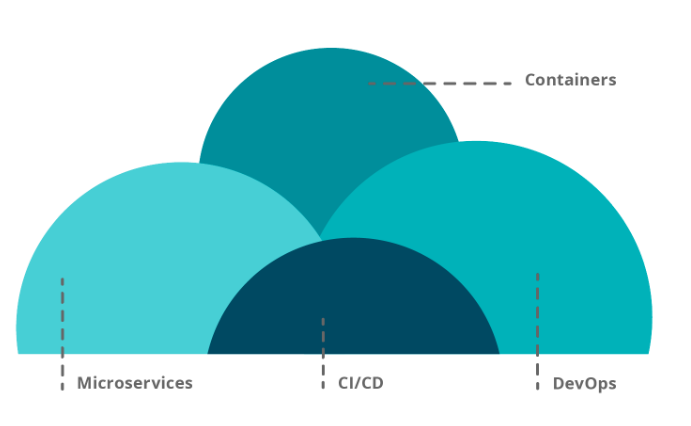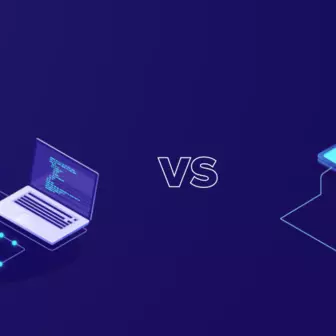We have already discussed how cloud computing transformed into cloud-native and DevOps practices assimilated easily into its an ecosystem. However, this amalgamation highlighted another pain point for developers: how to manage the storage of mammoth amount of data that churns out with every cycle of feedback loop?
To be precise, there are two issues that can arise from storage problems:
- Data loss or data unavailability.
- Performance problems or inability to handle spikes in demand.
The cloud-native system gives you the control of the storage provisioning process and developers gain the ability to store application-based data that can be utilized in an optimal manner along the way.
So, what are the best of measures to be taken in this scenario? Let’s find out!

What does Cloud Native Mean for Storage?
Container packaged cloud-native and its mechanism has three core capabilities— visibility, experimentation, and optimization— which apply in the same breath to the storage landscape of the platform too. Shedding the traditional ways of storage, organizations now want to scale up the storage and structure of the data in an innovative manner.
When data is derived from the cloud-native application it is stored at the various places-event log, object store, cache, cold storage or relational database. Among these options, the choice of storage is entirely dependent on the situation, the type of data and it’s utility. For instance, say, you want to store media files for a durable amount of time, then Object storage is the ideal place for it. Similarly, if there’s a product catalog that can have high traffic on the site, it should be stored in the cache. The considerations points can also include the latency and read performance to narrow down the choices.
There are two more aspects of data storage, scalability, and performance. Being built on scale-out architectures, the cloud-native applications require the data layer to be highly scalable. The flexibility provisioned by the cloud is of high significance here as the hundreds of thousands of data entities need a reliable and scalable manner to perform.
How Storage and Data Management Takes Place Today
Revealed in a Cloud Native Computing Foundation (CNCF) customer study, 73% of customers ran containerized applications in production and 27% only planned to use containers in the near future.
Applying the principles of containers, it becomes primary to separate data and metadata flow in the cloud-native.
It allows the data path activity to run smoothly and operations like tiering, mobility or snapshots are conducted without any interference.
However, it is easier said than done. The separation of control over the data planes is often hindered by nonoptimal data flows and inefficient mannerism. And to resolve this issue, microservices are called upon for rescue.
Adapting To A New Storage Architecture
As we have established that moving your production into containers doesn’t help completely, it needs the support of an architecture based on the concepts of microservices in order to hold up the containers. In this transitional phase, the siloed storage devices are getting replete and rich data providing management capabilities are becoming an integral part of the system.
Moreover, the stateless and stateful applications are to be implemented as containers that possess the strength to effectively carry the management, reduce cost and improve the overall utilization too.

How Efficient are Microservices?
What benefits do the microservices and its principles pass down to the cloud-native applications?
Independent scaling of the data and the control of data planes is what microservices-based applications force into the cloud-native platforms.
Next, the required portability of the applications and containers is also taken care of in the process along with ease of deployment and configuration, hike in productivity and the integration of more efficient resource. According to 12factorapp, the microservices should enable durability, elasticity and continuous integration attribute to the cloud-native by not persisting any configuration, logs or data.
But the story doesn’t end here. It equally poses hindrances in maintaining strong consistency in a distributed set of systems.
However, if there are hiccups, solutions are not far behind.
Conclusion
Along with cloud-native storage, the infrastructure required to support the applications has to evolve too. Moving above the limitations and ignoring the solvable flaws of the microservices-based approach, organizations should embrace the maximum utility of the application that modernizes the containers and delivers your software in an effective manner.
What's your take on cloud-native development? Share with us on our social networks: Facebook, LinkedIn, and Twitter.
Subscribe
Related Blogs
Serverless vs Managed Services: Which One to Choose

When you decide to build an application in the cloud, you need to consider several factors. One of the most important…

Over the past few years, the cloud industry has gone through an extreme change with the transformation of serverless…
Putting The Serverless Trend Under a Microscope

Flexible. Scalable. Economical. These terms essentially sum up the advantages of serverless computing, an architecture that…



